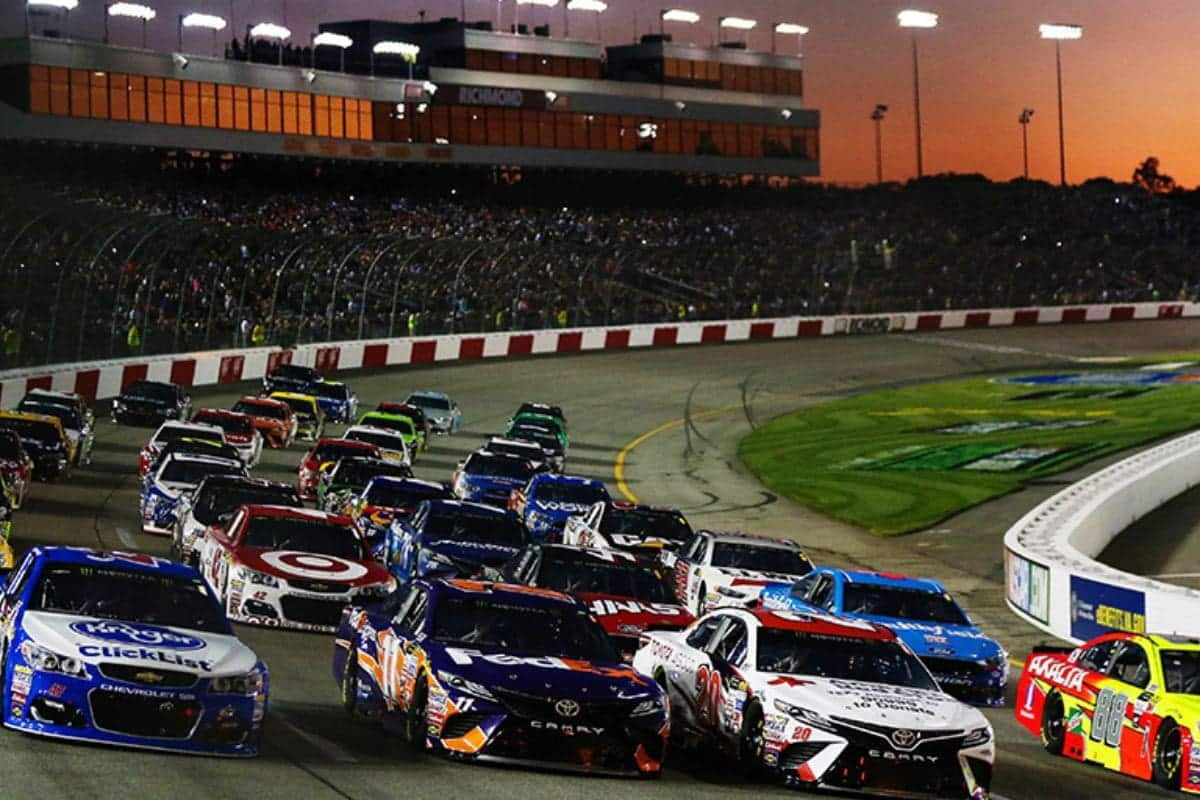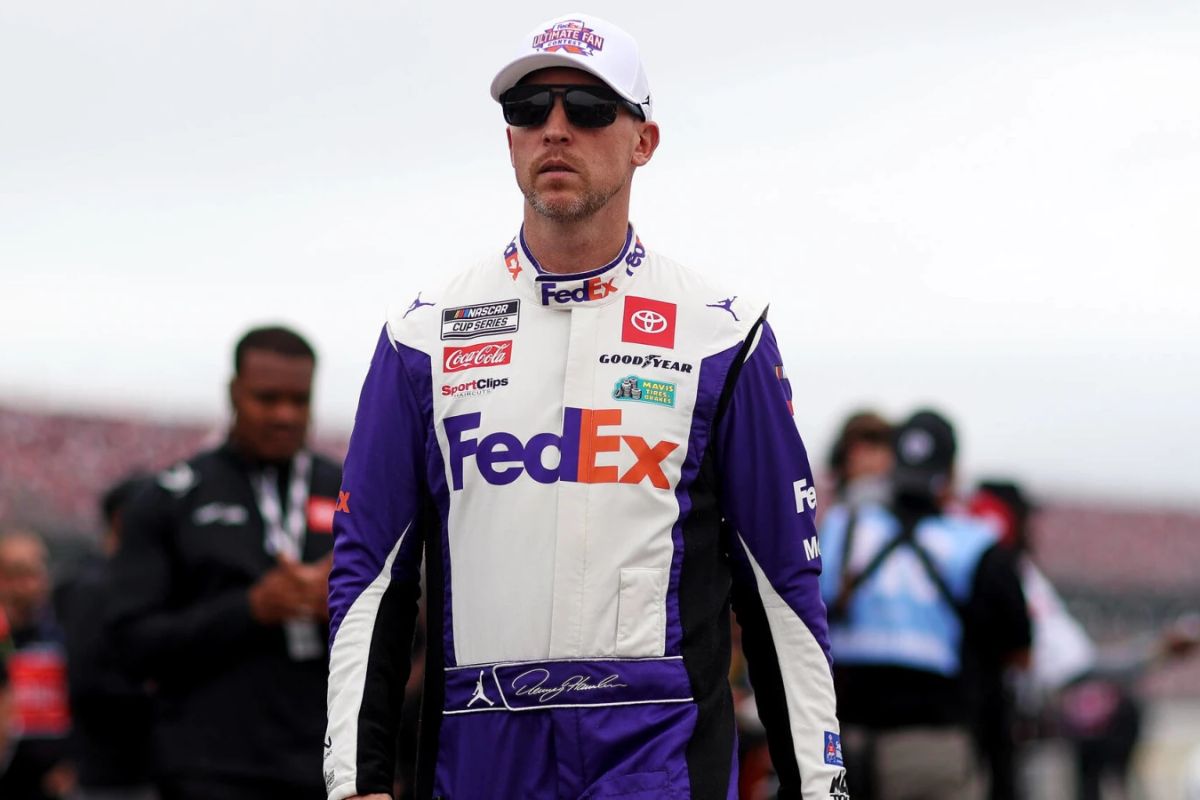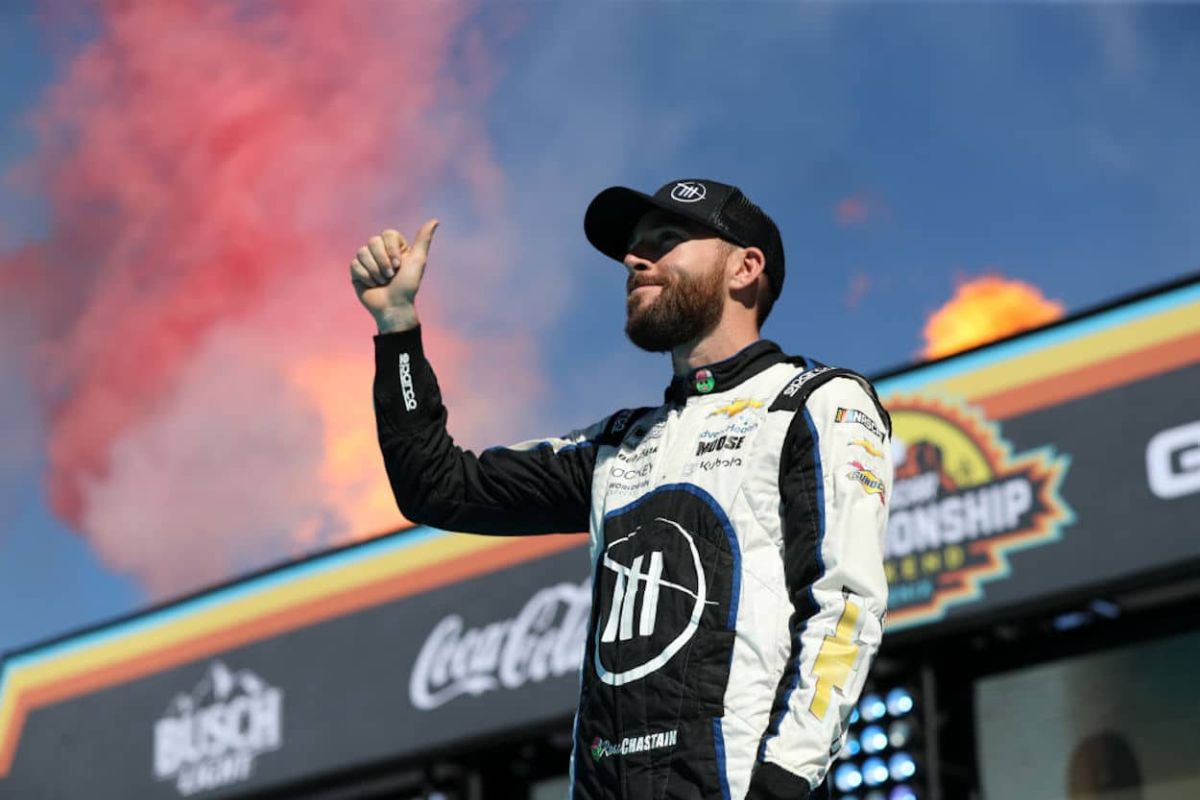Ross Chastain’s Raw Criticism of Austin Dillon: In the aftermath of Austin Dillon‘s controversial action at Richmond Raceway, Ross Chastain finds himself contemplating the delicate balance between aggression and strategy as he considers stepping into the roles traditionally occupied by rivals Joey Logano and Denny Hamlin. The dynamics of the playoffs have shifted dramatically, highlighting the necessity for drivers to adapt quickly to evolving scenarios. Chastain’s reflections reveal a deeper understanding of the psychological warfare present in NASCAR, prompting questions about how he might utilize this chaos to his advantage. The stakes are high, and the strategies he employs could redefine his path in the postseason.
Key Highlights
- Ross Chastain reflects on the aggressive tactics used by Logano and Hamlin, considering how to adopt similar strategies for competitive advantage.
- Chastain acknowledges the importance of calculated risk-taking in the context of the recent race dynamics following Dillon’s controversial move.
- The emotional rollercoaster of the race influences Chastain to evaluate how to handle rivalries and conflicts effectively.
- Chastain’s current playoff position drives him to emulate the aggressive driving styles of Logano and Hamlin to secure better standings.
- With the playoffs approaching, Chastain sees an opportunity to leverage the chaos in standings to enhance his own competitive edge.
Richmond Raceway Controversy and Reactions
In the aftermath of the Richmond Raceway race, the controversy surrounding the unexpected outcome has sparked intense discussions among fans and analysts in a similar manner. The race culminated in a dramatic finish where Joey Logano edged out competitors, including Austin Dillon, under circumstances that left many questioning the integrity of racing strategy and execution.
Denny Hamlin, a local favorite, found himself tantalizingly close to victory, only to be overshadowed by Dillon’s unexpected surge. This event encapsulates the unpredictable nature of NASCAR, where fortunes can change in a heartbeat.
The reactions to this finish have been multifaceted. Fans expressed a mixture of exhilaration and disappointment, highlighting the inherent volatility of the sport. For some, the thrill of an unpredicted winner like Dillon adds to the allure of NASCAR, demonstrating that no driver’s position is ever guaranteed until the checkered flag waves.
Conversely, others lamented the missed opportunity for Hamlin, who seemed destined for victory on his home track. This dichotomy in responses highlights the emotional investment fans have in their drivers, further fueling the discourse surrounding race strategy and the implications of last-lap tactics.
Moreover, analysts have begun dissecting the implications of this race for future competitions. Will drivers adapt their strategies, or will they continue to accept the risk that comes with aggressive racing?
The Wreck and Aftermath
The wreck that blemished the Cook Out 400 at Richmond Raceway serves as a vivid reminder of the precarious nature of NASCAR racing, where split-second decisions can lead to catastrophic outcomes. In a sport characterized by intense competition and significant stakes, the incident that unfolded not only altered the race’s course but also left participants and spectators grappling with its implications.
Two capable racers found themselves entangled, their cars spinning uncontrollably as the chaos unfolded. As discussions surrounding the race results commenced, a palpable tension filled the air. Few seemed to relish the outcome of the event, as the aftermath of the wreck overshadowed any celebratory sentiments.
The mood was dull; even the most ardent fans struggled to conceal their unease when recounting the events. This incident serves as a striking example of the thin line professional drivers walk, where ambition and risk intersect.
Among those contemplating their next moves is Ross Chastain, who now finds himself reflecting on the complexities of stepping into the roles typically occupied by seasoned veterans like Joey Logano and Denny Hamlin. The wreck has not only disrupted the race dynamics but also prompted a broader reevaluation of strategies and relationships within the NASCAR community.
Denny Hamlin’s Allegations and Reactions
Amidst the fallout from the recent wreck at Richmond Raceway, Denny Hamlin has emerged as a vocal critic, directing his ire towards Austin Dillon and the crew at Richard Childress Racing.
Hamlin’s allegations center on the notion that Dillon’s actions were not merely instinctual but orchestrated, hinting at a premeditated strategy to cause the wreck. His claims gained traction when Dillon’s spotter, Brandon Benesch, was overheard instructing Dillon to “Wreck him” on the team radio, a directive that raises considerable ethical questions about the conduct of racing teams.
Hamlin’s assertions are highlighted by the competitive nature of NASCAR, where team dynamics and communication can greatly influence race outcomes. His frustration is further compounded by the chaotic scene that unfolded post-incident, particularly with Joey Logano‘s explosive reaction.
Logano, visibly agitated, revved the engine of his Ford Mustang and spun his tires near Dillon’s pit box, escalating tensions and raising safety concerns. This response exemplifies the elevated stakes involved and the emotional investment drivers have in their performance and safety.
While Hamlin’s reaction stems from a desire for accountability within the sport, it also emphasizes the ongoing dialogue about the moral implications of racing tactics. As fans and analysts dissect the incident, the broader implications for team strategies and driver interactions are likely to be a focal point in upcoming discussions.
Ross Chastain’s Perspective and Emotional Reactions
Ross Chastain’s insights into the recent wreck at Richmond Raceway reveal a deep understanding of the emotional turbulence that drivers experience in high-pressure situations. In an interview on “Rubbin Is Racing,” Chastain articulated the visceral reactions that can arise when a race slips away, particularly when another driver is perceived as the cause. His reflections resonate with the universal struggle of athletes who confront the fragility of their aspirations in real-time.
Chastain acknowledged that, as a competitor, he is not immune to feelings of frustration and disappointment. He emphasized, “I am human. I am gonna react just like everybody else.” This admission highlights the shared humanity among drivers, who live in a world where every race is laden with the potential for victory or heartbreak.
“I am human. I am gonna react to just like everybody else. If you don’t win a race. You see a checkered flag and you can’t get there, and you think somebody took that from you. So, you’re upset and I am not different and most people in this world when they can see a checkered flag and know what winning cup races mean what dominoes that sets off.” – Chastain
The emotions he described—anger, sadness, and a sense of loss—are not merely personal but reflect the collective experience of those vying for glory on the track.
“I would’ve felt disappointed, mad, and sad; all the feelings come rushing in for me and some guys show that and some hold it a little bit more.” – Chastain
What makes Chastain’s perspective particularly compelling is his recognition that responses to such incidents can vary markedly among drivers. While some may outwardly express their emotions, others might internalize them. This intricate understanding of emotional expression in racing dynamics reveals a mature approach to dealing with conflict and rivalry in a sport where high stakes can lead to explosive reactions.
Impact on Playoffs and Ross Chastain’s Prospects
Recent events have greatly altered the landscape of the NASCAR playoffs, particularly following the penalties imposed on drivers like Joey Logano and Austin Dillon. Logano’s $50,000 fine for safety violations on pit road and Dillon’s disqualification from playoff rivalry due to a 25-point deduction create a wave effect that reshapes the competitive dynamics within the series.
With Dillon’s absence, the playoff picture is wide open, inviting drivers like Ross Chastain to seize this unexpected opportunity. Chastain’s prospects are markedly strengthened by Dillon’s misfortune, as he stands poised to capitalize on the ensuing chaos. The penalties not only shift the playoff standings but also heighten the strain on remaining competitors.
Chastain, known for his driving style and insight, could utilize this moment to improve his standing and performance in the playoffs. The possibility of a more aggressive approach in subsequent races could yield dividends, as the remaining drivers vie for crucial points and positions.
However, the path forward is fraught with challenges. Chastain must navigate increased scrutiny and expectations, particularly as he contemplates taking on the roles traditionally held by Logano and Dillon.
Chastain’s Path to the Playoffs
As the countdown to the playoffs intensifies, Chastain finds himself at a significant crossroads, where consistency and tactical racing will be paramount. With only three races remaining in the regular season, the stakes are exceptionally high.
Chastain’s current standing at 14th in the Cup Series with 584 points reflects a commendable performance, particularly highlighted by a top-five finish at Richmond Raceway, which provided him with critical points. However, the looming stress from competitors like Ty Gibbs and Bubba Wallace adds a layer of complexity to his playoff aspirations.
To secure his position, Chastain must adopt an aggressive yet calculated approach. A victory in one of the upcoming races would decisively quell any uncertainties surrounding his playoff eligibility. Given his track record of consistency, which has been a hallmark of his racing style, Chastain has the potential to capitalize on opportunities that arise during these important races.
Strategically, he must avoid unnecessary risks while also being prepared to seize the moment when it presents itself. This balance will be essential as he navigates the challenges posed by both the track and his rivals.
With each race presenting unique variables, Chastain’s ability to adapt and execute a well-thought-out race strategy could very well determine his playoff fate. The next few weeks will not only test his racing insight but also define his legacy in a season rife with competitive tension.
News in Brief: Ross Chastain’s Raw Criticism of Austin Dillon
In the aftermath of the Richmond Raceway incident, the dynamics of NASCAR racing have shifted considerably, illustrating the delicate balance between aggression and strategy. Ross Chastain’s reflections on the actions of Joey Logano and Denny Hamlin highlight the necessity of adaptability in racing environments. As playoff implications loom, the ability to navigate competitor tactics while preserving a competitive edge becomes paramount. The unfolding narrative serves as a demonstration of the unpredictable nature of the sport and its impact on championship trajectories.
ALSO READ: Ross Chastain Defends His No. 1 Seat as Dale Jr.’s Rising Star Gains Momentum



